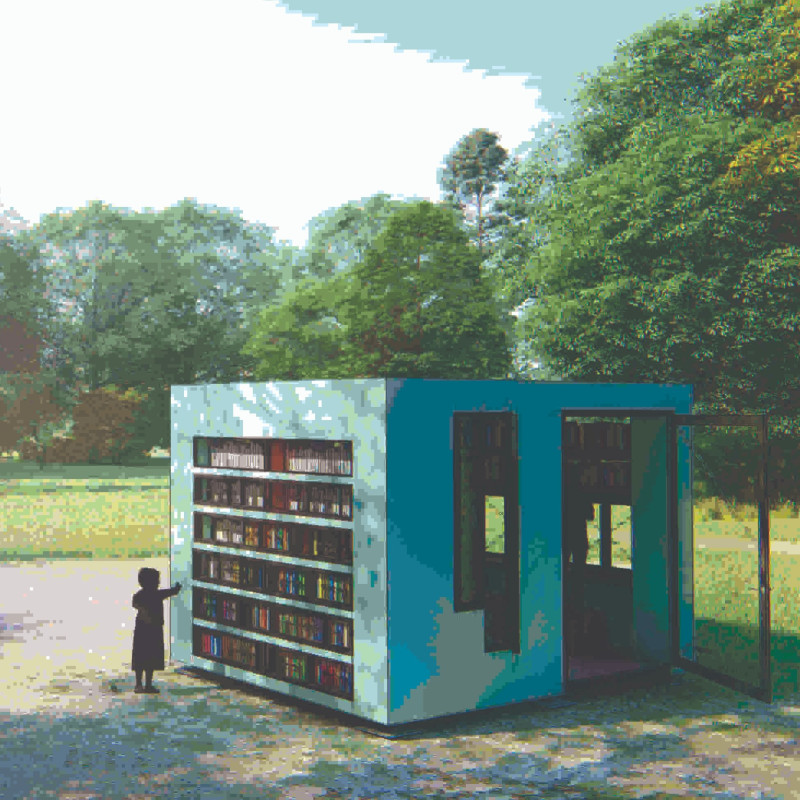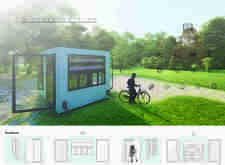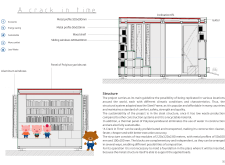5 key facts about this project
Design and Functionality
The core function of this project is to provide a communal space for reading, exchanging books, and engaging in community activities. It features a rectangular form, measuring 3.20 x 2.80 meters, characterized by simplicity and clarity in its design language. The open configuration allows for ample natural light and views, establishing a direct connection to the outdoors. Key features include large sliding windows that facilitate ventilation and visibility and wooden shelving integrated into the structure for displaying literature. The adjustable benches accommodate various seating preferences, enhancing comfort and usability.
Unique Approaches in Design
What differentiates "A Crack in Time" from other similar projects is its emphasis on user interaction and accessibility. The design incorporates universally accessible features, ensuring that all community members can utilize the space effectively. The inclusion of bike stands promotes alternative transportation, aligning with sustainable practices. The integration of natural elements into both the structure and the surrounding environment encourages a holistic approach, where reading becomes an experience intertwined with nature.
Materials and Sustainability
The project utilizes a range of sustainable materials that support both functionality and environmental responsibility. Steel frames provide structural integrity, while polysiocyanideurat panels enhance thermal performance. The wooden shelving not only offers warmth to the aesthetic but also utilizes sustainably sourced materials. This careful selection emphasizes the project's commitment to low-waste production methods and recyclable materials, providing an architectural model that is both efficient and considerate of its ecological footprint.
To gain further insights into "A Crack in Time," including its architectural plans and sections, readers are encouraged to explore the detailed presentation of the project. Investigating the architectural designs and ideas will provide a comprehensive understanding of the innovative approaches implemented in this reading space.


























